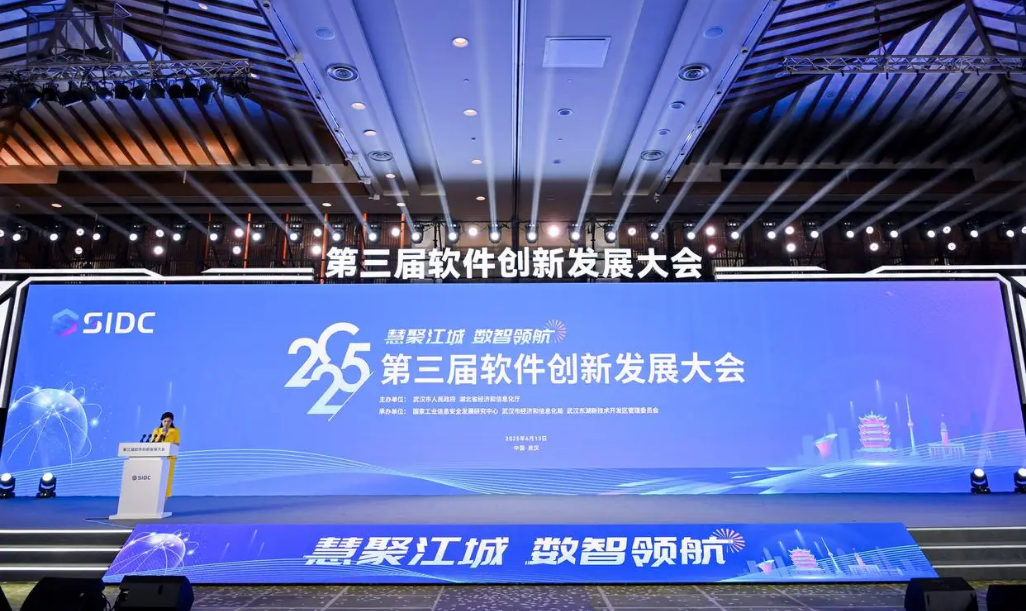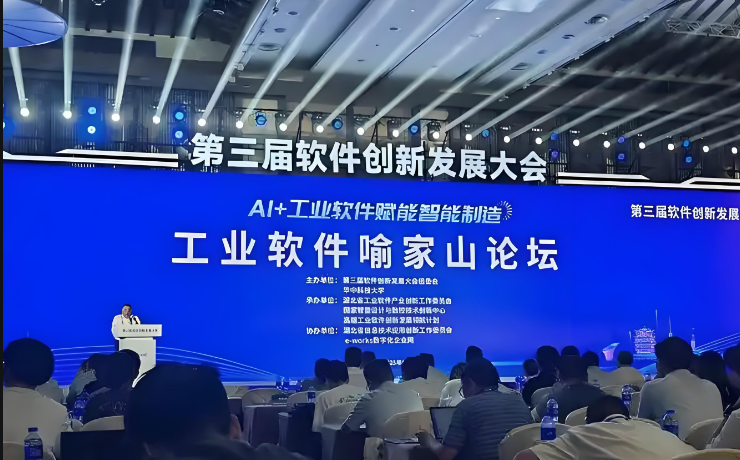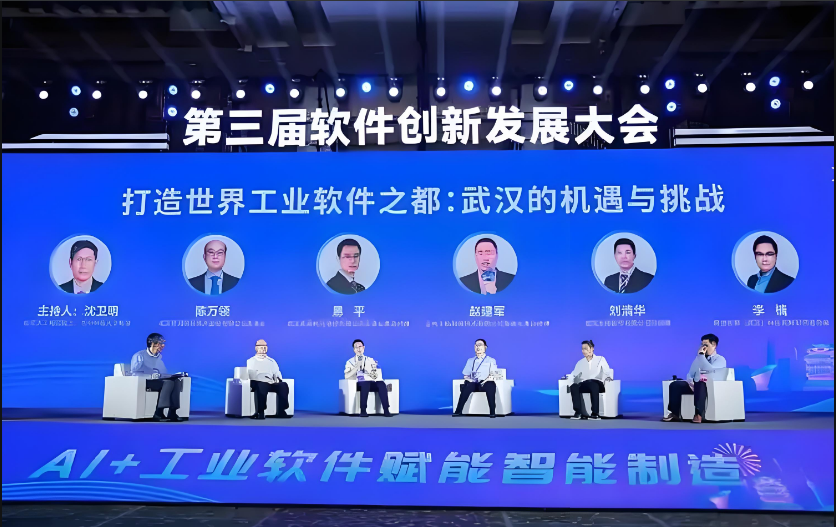Wuhan’s ¥4.5 Billion Deals Ignite Software Innovation: How Egret Cloud Seizes AI Opportunities
Wuhan, June 13, 2025 — The 3rd Software Innovation & Development Conference opened grandly at the Hilton Wuhan Optics Valley Huashan. Over 1,200 experts, scholars, business leaders, and developers convened for in-depth discussions under the theme "Gathering Wisdom in Wuhan: Leading the Digital-Intelligent Era."
Twenty-four major software projects were signed on-site, totaling over ¥4.5 billion.
Wuhan’s software industry revenue reached ¥352.1 billion in 2024, with growth rates leading China’s "Software Famous Cities" for three consecutive years. This success stems from its ecosystem of 42,000+ software enterprises, 79 national-level "Little Giant" specialized firms, and 21 listed companies.

1. Wuhan’s Software Ambitions & Strengths
Wuhan has established a significant competitive edge in software. As a national software hub, it has nurtured local leaders like Dameng Data, KMSoft, and Tianyu Software, while attracting tech giants including Huawei, Douyin (TikTok), Tencent, and Alibaba—forming a synergistic "domestic leaders + tech giants" industrial framework.
The city boasts pioneering achievements in core technologies: hosting China’s first listed domestic database provider and first smart vehicle chipmaker. These milestones position Wuhan among China’s leaders in foundational and vertical software.
Wuhan aims higher. Per the conference’s blueprint, the city is accelerating its "2+3+3" software system:
- Core Focus: Foundational & Industrial Software
- Key Sectors: Cybersecurity, Geospatial Information, Automotive Software
- Frontier Fields: AI, Blockchain, Metaverse
By 2030, its software industry scale targets ¥800 billion. To achieve this, Wuhan is advancing major platforms like Xiaomi’s Mega R&D Center and Industrial Software Ecosystem Commons, while supporting industry innovation consortia led by top enterprises.
2. Strategic Vision Behind the ¥4.5B Deals
The 24 signed projects span Xinchuang platforms, industrial software, AI applications, and OS ecosystems. This investment represents strategic moves toward a self-sustaining software ecosystem, not merely capital injection.
Shenzhen Fabon Technology plans to establish a central China Xinchuang hub in Wuhan, building a HarmonyOS full-stack enablement center—aligning with MIIT’s emphasis on "advancing OpenHarmony ecosystems."
Many projects target AI-software integration, mirroring global trends. Sequoia Capital noted at its recent AI Summit: "AI is shifting from selling tools to selling outcomes," with pricing tied to KPIs (e.g., development speed, GPU costs, GMV) instead of features.
Hubei’s software revenue grew 14% YoY to ¥109.46 billion in Jan-Apr 2025, accounting for 53.5% of central China’s total—providing a robust foundation for the new projects.
3. Industrial Software Breakthroughs & Regional Collaboration
The inaugural "Yujiashan Industrial Software Forum" showcased Wuhan’s R&D capabilities anchored by Huazhong University of Science and Technology (HUST). The "Yujiashan Initiative," launched by HUST alumni, symbolizes industry-academia integration.
Yi Ping, Chairman of Wuhan Emold Technology, shared his Ph.D.-research-turned-market-leading mold management software. Yet he highlighted challenges: funding gaps, insufficient application scenarios, and delayed policy implementation. Facing talent competition from Shenzhen/Suzhou, Yi urged: "Hubei must accelerate specialized subsidies and policies to retain innovators!"
Representatives from Representatives from six central Chinese provincial capitals signed the Industrial Software Pilot Verification Agreement, upgrading last year’s Central China Software Productivity Initiative. This collaboration pools government-industry-academia resources for high-end sectors like aerospace, shipbuilding, and automotive—solving single-region scenario shortages and providing expansive testing platforms.

4. The "AI + Software" New Paradigm
Wang Yanqing, Director of MIIT’s IT Development Department, outlined China’s "AI + Software" strategy: accelerating intelligent development tools and embedding AI across software design, development, testing, and operations.
This aligns with Sequoia’s AI evolution theory:Software as a Tool → Software as a Co-worker → Software as an Outcome.
AI pricing models are fundamentally changing: customers pay only for profit-driving results, not functional tools. KPIs like development acceleration and GPU cost efficiency are becoming key metrics.
OpenAI CEO Sam Altman projected at Sequoia’s summit: "2025: AI agents begin working; 2026: AI discovers new knowledge; 2027: AI creates value in the physical world."
5. Cultivating Open Source Ecosystems
Wuhan is advancing innovation centers for OpenHarmony and RISC-V, alongside open-source communities like Huanghe and East Lake. By 2030, it aims to attract 1 million+ open-source developers.
Director Wang stressed MIIT’s commitment to expanding developer pools through open-source summits, competitions, and campus initiatives—creating opportunities for firms like Egret Cloud.
Challenges remain. iFlytek Chairman Liu Qingfeng proposed at the NPC: "China must build self-controlled ecosystems around domestic LLMs, supporting developer communities, evaluation systems, and open-source platforms." Wuhan plans five comprehensive and nine specialized software clusters to nurture this soil.

6. Egret Cloud’s Strategic Pathway
Outcome-Driven Product Development is key to seizing AI opportunities. Sequoia’s criteria for "outcome products" guide Egret Cloud:
- Execute end-to-end tasks
- Ensure attributable results
- Enable continuous learning/optimization
Vertical OS Opportunities: Sequoia notes that enterprise entry points may be vertical agent OSes (e.g., law, healthcare)—not general LLMs. Egret Cloud can leverage Wuhan’s strengths in automotive software and cybersecurity to build industry-specific OSes.
The Central China Industrial Software Pilot Platform offers cross-regional validation for high-value aerospace, marine, and automotive applications.
Reshaping Software Value:As Sequoia observes, AI is transitioning "from selling tools to co-working, ultimately to outcomes." Wuhan’s plan—annually expanding 150+ industrial software/LLM scenarios and cultivating 10 ¥10 billion-scale software firms by 2030—embraces this shift.
While global giants vie over AI OS dominance, Wuhan’s "Optics Valley," "Auto Valley," and "Cyber Valley" are quietly building next-gen software ecosystems.
As OpenAI CEO Sam Altman envisioned: "2025: Autonomous AI agents begin operating at scale; 2027: AI steps into the physical world to create tangible value."



